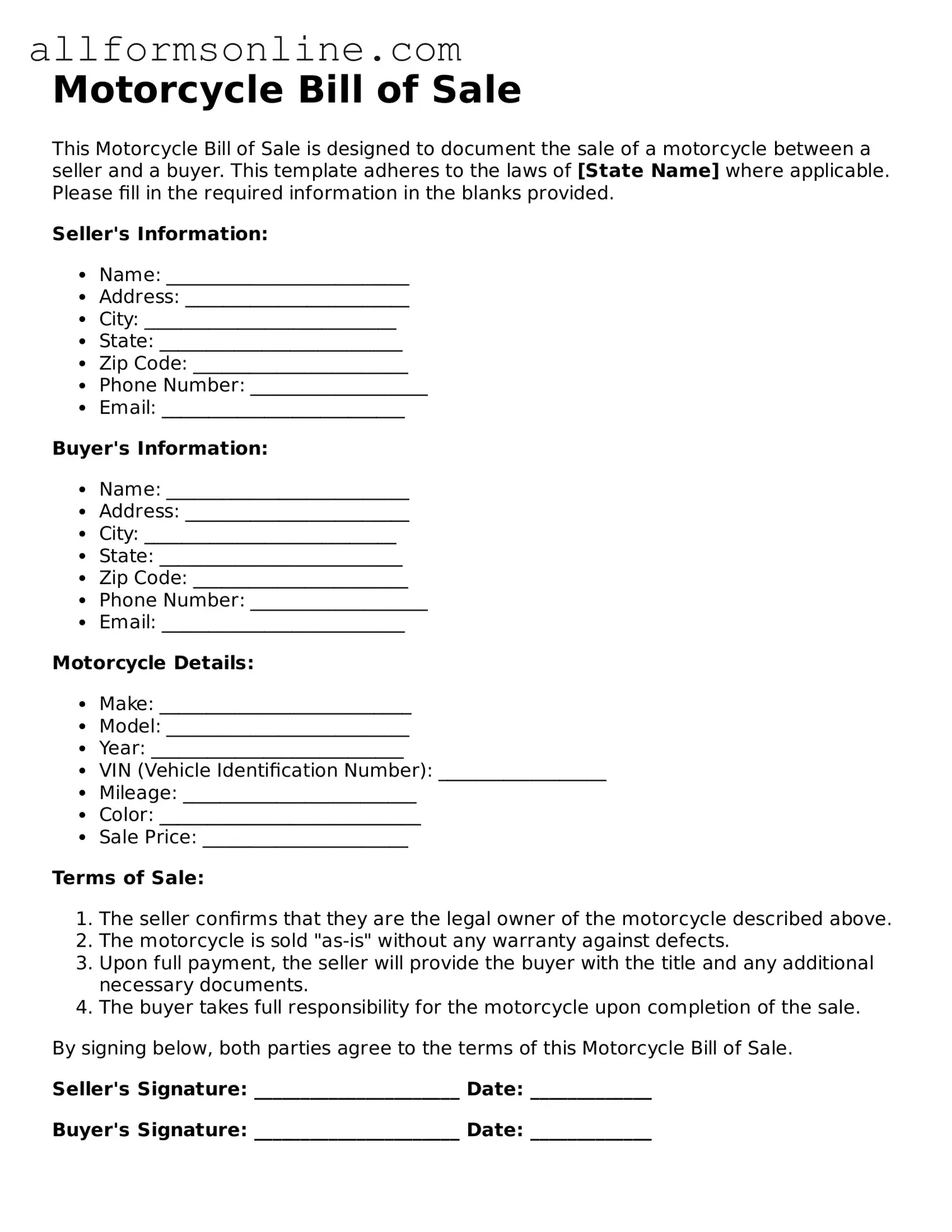What is a Motorcycle Bill of Sale?
A Motorcycle Bill of Sale is a legal document that records the sale of a motorcycle. It serves as proof of the transaction between the buyer and the seller, detailing the specifics of the motorcycle, the sale price, and the date of the transaction.
Why do I need a Motorcycle Bill of Sale?
This document is important for both parties involved in the transaction. It protects the seller by providing proof that the motorcycle has been sold and helps the buyer establish ownership. Additionally, it may be required for registration and titling purposes in your state.
What information is included in a Motorcycle Bill of Sale?
The form typically includes the names and addresses of the buyer and seller, the motorcycle's make, model, year, Vehicle Identification Number (VIN), sale price, and the date of sale. Some forms may also include odometer readings and any warranties or conditions related to the sale.
Is a Motorcycle Bill of Sale required in all states?
Not all states require a Bill of Sale for motorcycle transactions, but many recommend it. Check your state’s requirements to ensure compliance with local laws. Having a Bill of Sale can simplify the registration process and provide legal protection.
Can I create my own Motorcycle Bill of Sale?
Yes, you can create your own Motorcycle Bill of Sale. However, it is important to ensure that it includes all necessary information and complies with your state’s regulations. Many templates are available online to help you get started.
Do I need to have the Motorcycle Bill of Sale notarized?
Notarization is not always required, but it can add an extra layer of security to the transaction. If you want to ensure that the document is legally binding and to prevent disputes, consider having it notarized.
What if the motorcycle has a lien on it?
If there is a lien on the motorcycle, it is crucial to address this before completing the sale. The seller should pay off the lien and obtain a lien release from the lender. This ensures that the buyer receives clear title to the motorcycle.
How do I complete a Motorcycle Bill of Sale?
To complete the form, fill in all required information accurately. Both the buyer and seller should sign and date the document. Make copies for both parties to keep for their records. Ensure that all details are clear to avoid future disputes.
What should I do after the sale is complete?
After the sale, the buyer should take the Motorcycle Bill of Sale to their local Department of Motor Vehicles (DMV) to register the motorcycle in their name. The seller should keep a copy for their records, as it serves as proof of the sale.
Can I use a Motorcycle Bill of Sale for other types of vehicles?
A Motorcycle Bill of Sale is specifically designed for motorcycles. However, similar forms can be used for other types of vehicles, such as cars or trucks. Just ensure that the document reflects the specific details relevant to the vehicle being sold.
